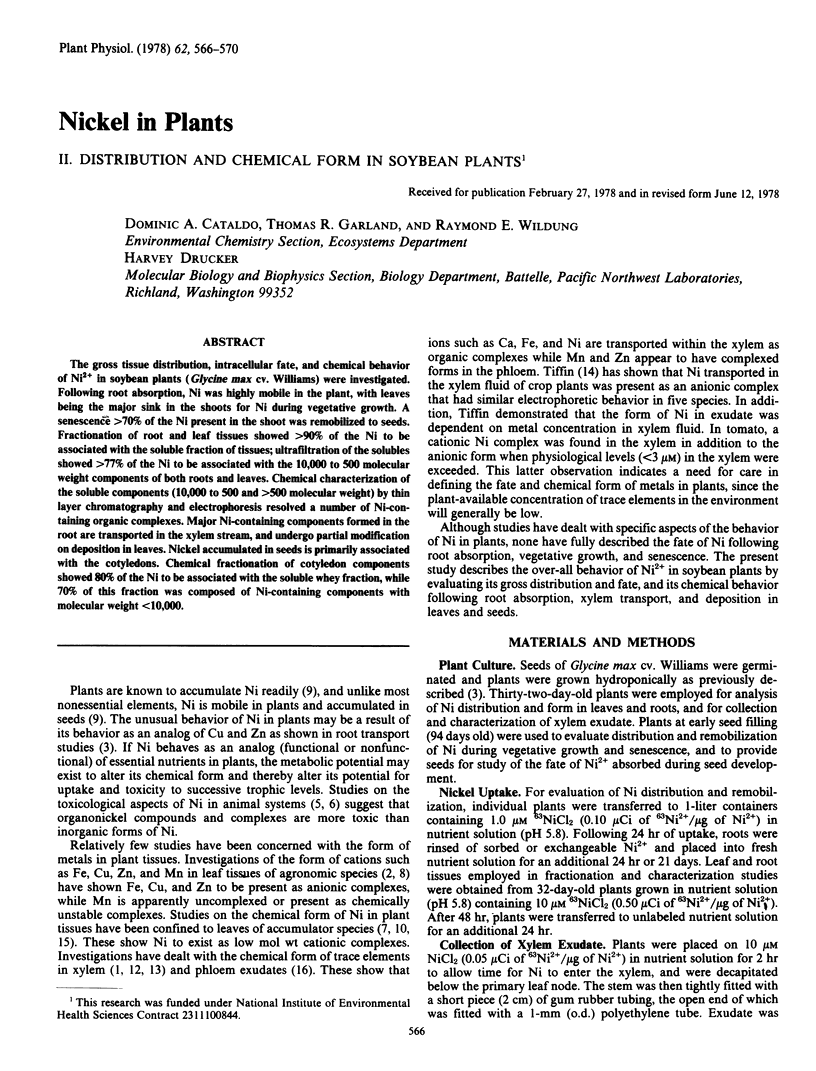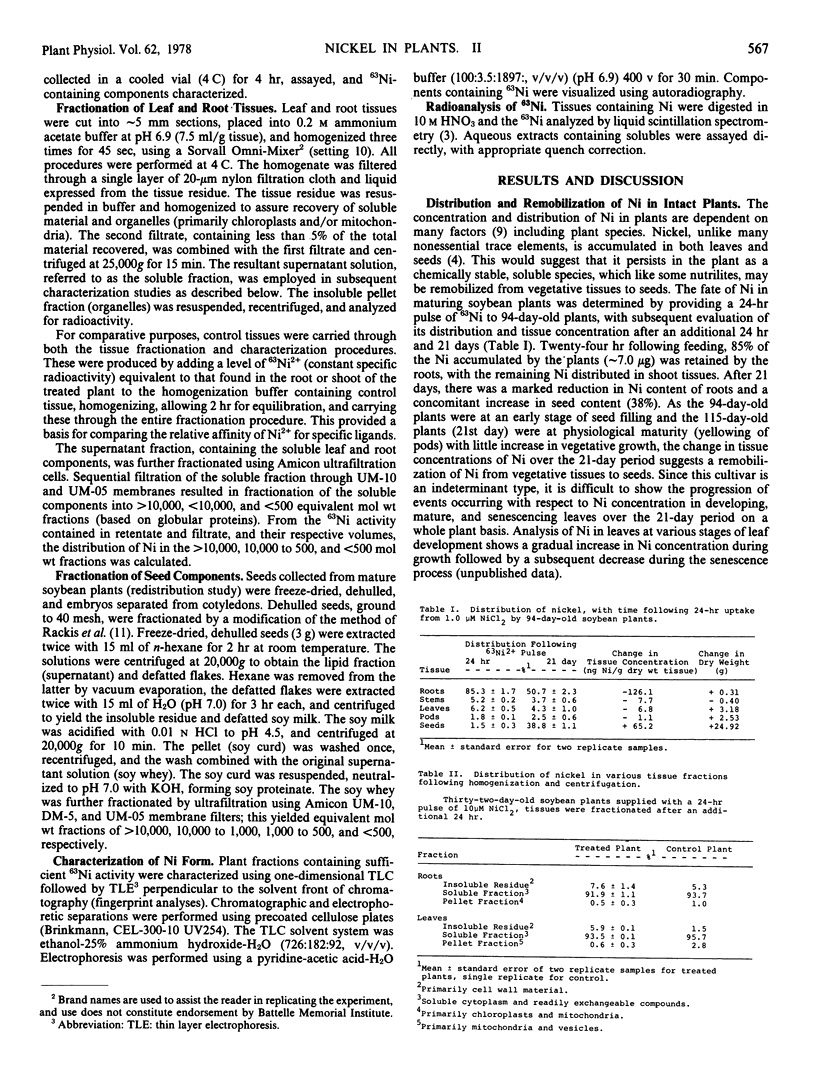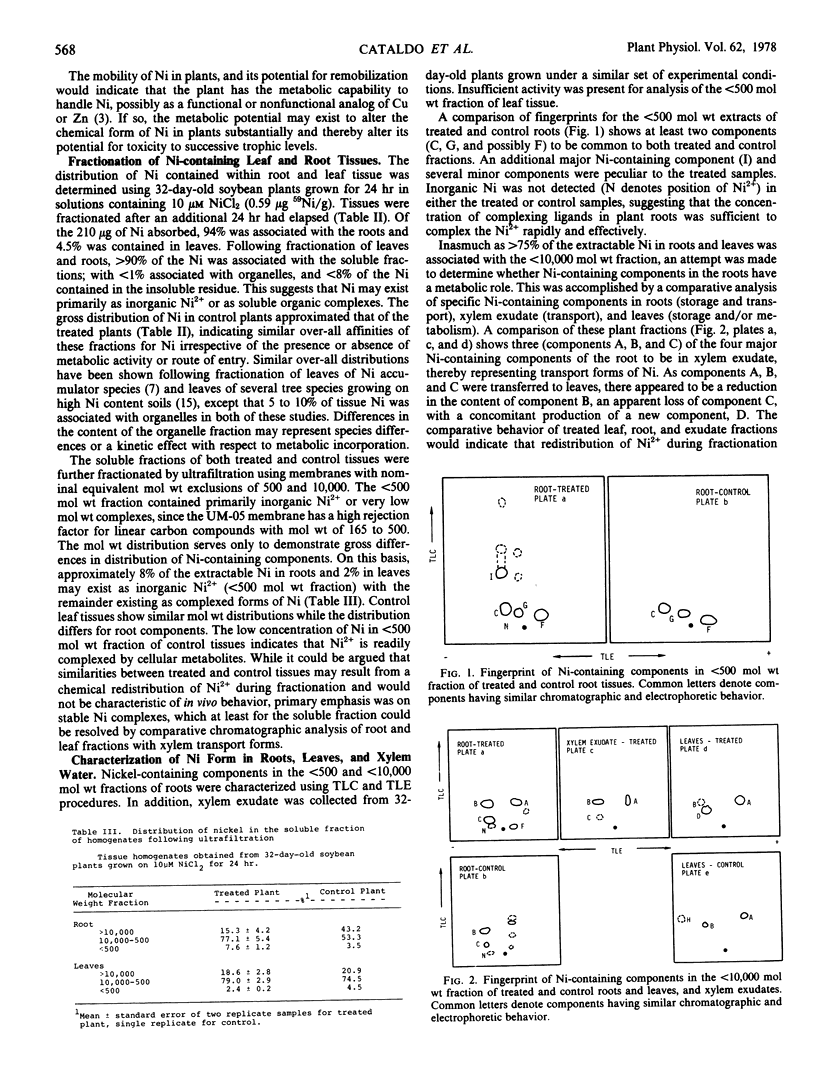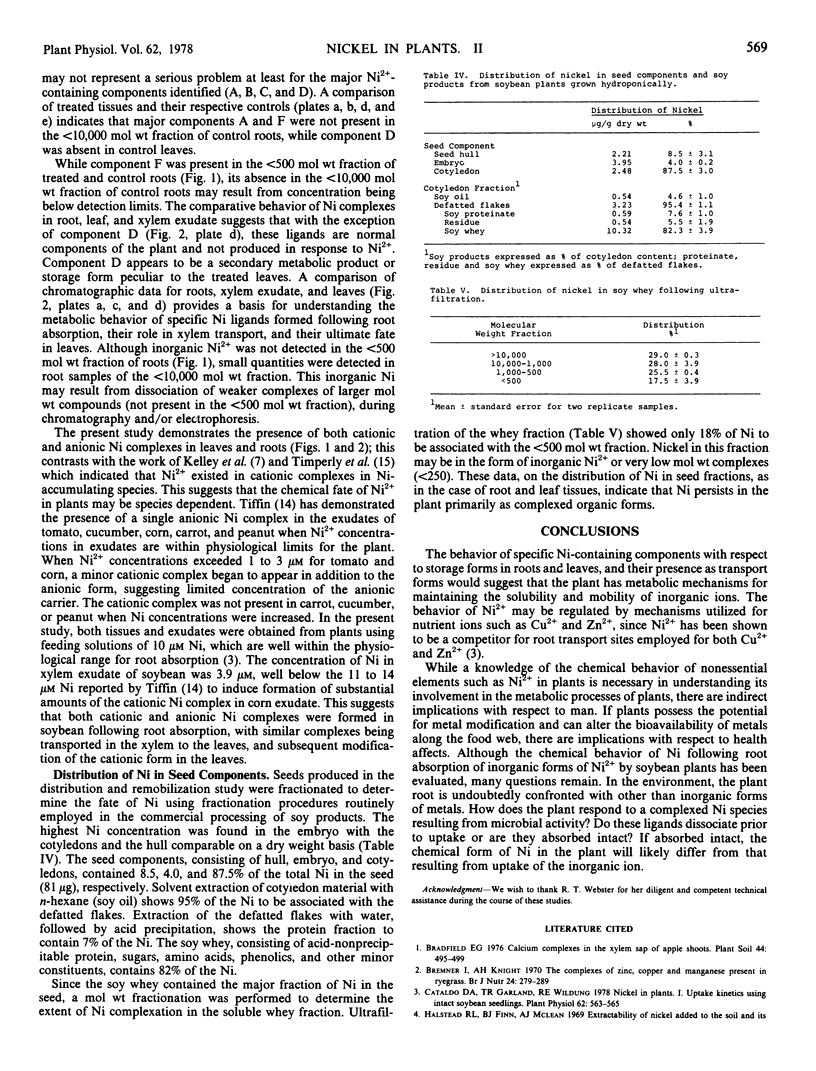Abstract
The gross tissue distribution, intracellular fate, and chemical behavior of Ni2+ in soybean plants (Glycine max cv. Williams) were investigated. Following root absorption, Ni was highly mobile in the plant, with leaves being the major sink in the shoots for Ni during vegetative growth. A senescence >70% of the Ni present in the shoot was remobilized to seeds. Fractionation of root and leaf tissues showed >90% of the Ni to be associated with the soluble fraction of tissues; ultrafiltration of the solubles showed >77% of the Ni to be associated with the 10,000 to 500 molecular weight components of both roots and leaves. Chemical characterization of the soluble components (10,000 to 500 and >500 molecular weight) by thin layer chromatography and electrophoresis resolved a number of Ni-containing organic complexes. Major Ni-containing components formed in the root are transported in the xylem stream, and undergo partial modification on deposition in leaves. Nickel accumulated in seeds is primarily associated with the cotyledons. Chemical fractionation of cotyledon components showed 80% of the Ni to be associated with the soluble whey fraction, while 70% of this fraction was composed of Ni-containing components with molecular weight <10,000.
Full text
PDF




Selected References
These references are in PubMed. This may not be the complete list of references from this article.
- Bremner I., Knight A. H. The complexes of zinc, copper and manganese present in ryegrass. Br J Nutr. 1970 Mar;24(1):279–289. doi: 10.1079/bjn19700027. [DOI] [PubMed] [Google Scholar]
- Cataldo D. A., Garland T. R., Wildung R. E. Nickel in plants: I. Uptake kinetics using intact soybean seedlings. Plant Physiol. 1978 Oct;62(4):563–565. doi: 10.1104/pp.62.4.563. [DOI] [PMC free article] [PubMed] [Google Scholar]
- Haro R. T., Furst A., Falk H. L. Studies on the acute toxicity of nickelocene. Proc West Pharmacol Soc. 1968;11:39–42. [PubMed] [Google Scholar]
- MILLS C. F. Studies of the copper compounds in aqueous extracts of herbage. Biochem J. 1956 Jun;63(2):187–190. doi: 10.1042/bj0630187. [DOI] [PMC free article] [PubMed] [Google Scholar]
- Tiffin L. O. Translocation of iron citrate and phosphorus in xylem exudate of soybean. Plant Physiol. 1970 Mar;45(3):280–283. doi: 10.1104/pp.45.3.280. [DOI] [PMC free article] [PubMed] [Google Scholar]
- Tiffin L. O. Translocation of manganese, iron, cobalt, and zinc in tomato. Plant Physiol. 1967 Oct;42(10):1427–1432. doi: 10.1104/pp.42.10.1427. [DOI] [PMC free article] [PubMed] [Google Scholar]
- Tiffin L. O. Translocation of nickel in xylem exudate of plants. Plant Physiol. 1971 Sep;48(3):273–277. doi: 10.1104/pp.48.3.273. [DOI] [PMC free article] [PubMed] [Google Scholar]


